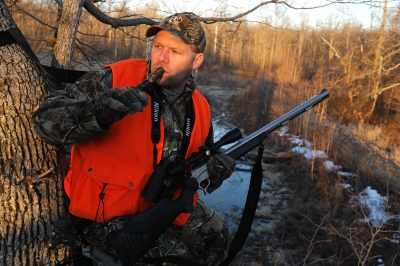
Calling a deer can mean the difference between success and failure on a hunt. Grunts work best when the hunter can already see a buck and watch how he reacts to his calls.
SERIES
- Part 1: Top Four Tips To Scouting Now
- Part 2: Early Season Deer Stand Tips
- Part 3: Follow the Moon
- Part 4: Five Top Deer Gear Essentials
- Part 5: Five Top Backpacks
- Part 6: Essential Trail Camera Know-How
- Part 7: Making The Call
- Part 8: Keeping Warm
While deer hunting may be seen by some as a sport where hunters simply go sit in a spot and wait for something to walk by, that characterization couldn’t be further from the truth; particularly where continually successful hunters are concerned. Sure, a day in the woods can be as simple as climbing into a treestand on the edge of a food plot or crop field and hoping something walks out and feeds within range. But what if that deer is out of range and you need to bring him closer? That’s where a great hunter turns to his calls, and making the right ones can be critical.
Following is a look at the main deer vocalizations, how to mimic them yourself, and more importantly, when to mimic them to maximum benefit.
Grunt
The Sound: A deer grunt is by far one of the most popular and familiar calls to hunters, and one of the most basic calls made by bucks as they feed and interact with other deer. It is to deer hunting what the yelp is to a turkey hunter—the basic go-to call. It mimics a series of deep, burp-like sounds and can be made as a series of short contact vocalizations or can be made as a single-note grunt.
When to Use It: This is a call that can be useful any time during the season, but tends to draw bucks in closer more effectively during the pre-rut and rut when bucks are more keyed up and looking for interaction—either to challenge another buck or find a receptive doe. Many hunters will sit in a stand and blind call. Don’t expect deer to simply come running in. Hunters in-the-know prefer to use it after they’ve spotted a particular buck and can read his reactions. I’ve personally used it to catch the attention of a passing buck and then bring him in close enough for a shot during bow and shotgun seasons.
How to Use It: “I’ve probably had the best luck with this simple deer call, putting together a series of three to five ‘bluuup…..bluup……bluup’ sounding notes,” says Virginia hunter and wildlife manager, Brandon Martin. Martin works as the Natural Resources Manager at Fort Pickett-Maneuver Training Center in Blackstone, Virginia. Fort Pickett is soon to become part of the iSportsman network of hunting locations to use the recreational management service. “I use a grunt call the entire season but have had my best luck with responses from bucks in October through November,” Martin says.
Fawn Bleats
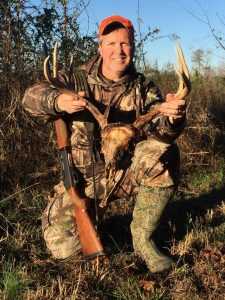
The author arrowed this buck the final day of bow season after bleating at it as he climbed into his stand.
The Sound: Short, high-pitched pleading sound similar to a lamb. Fawns will make this sound when lost or frightened.
When to Use it: Martin says this can be most effective during early season hunts when fawns are still sticking close to does and a hunter is simply looking to entice a doe closer in order to fill the freezer. It can bring a curious buck in as well, but typically won’t serve as a go-to call when the big boy steps into the open but just a little too far away for a clean shot.
How to Use It: Trying out a mid-volume series of two to three bleats can invoke some curiosity and bring in a doe looking for a fight or to comfort a little one,” says Martin. “I think it is just a normal response for a doe to check out fawn bleats, and for the hunter looking to fill the freezer, this call can work to their advantage.
“Outside of the early bow season, fawn bleats work to stop a walking/running deer. Depending on the speed and how far away the deer is, give a good sharp blast and be ready to put the shot in the boiler room,” he explained.
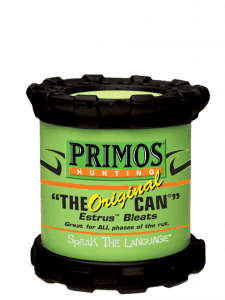
Primos—with its Original Can—was one of the first companies to roll out an estrus bleat call for hunting that is easy to use and has excellent volume.
Estrus Bleats
The Sound: Like the fawn bleats, it’s a little deeper, less pleading. Think grunting as a soprano. A good product for this is something like the Primos Original Can estrus bleat.
When to Use It: This call is great to work in the mix during the pre-rut and at the peak of the rut when bucks are looking to get with a hot doe ready to breed. Some hunters have sworn by this call, though I have admittedly had minimal luck using it to bring a big buck in until last year when climbing into an afternoon stand I spied a wide-racked buck crossing into the food plot not 60 yards away. I quickly climbed atop the platform and with no call handy (they were still in my pack) I made a bleat. The buck paused, turned and looked and then stepped into the pines. I hit him with another bleat as I readied my TenPoint Crossbow and, lo and behold, he stepped from the trees and marched right in my direction. I nailed him in the boiler room at 20 yards away.
How to Use It: Make single-note whining bleats when you spot a buck. For added realism and urgency, Martin likes to mix in a series of short-note tending grunts of a buck.
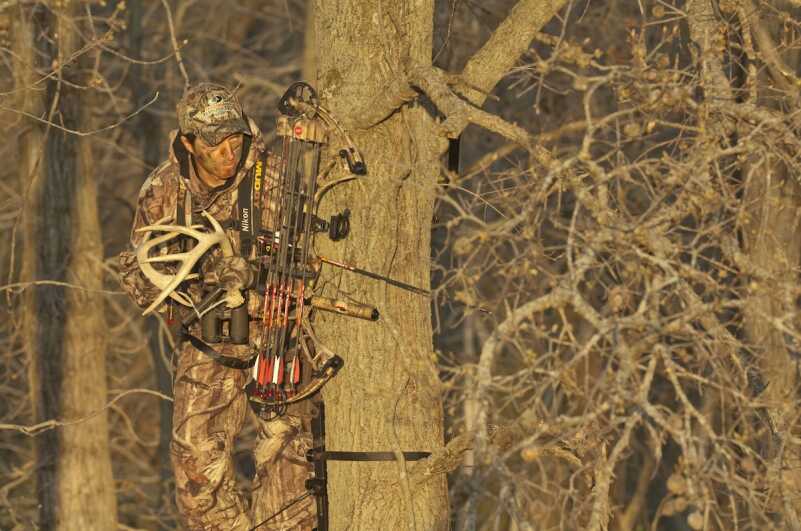
Most hunters prefer the tone of real antlers when rattling, though they can be more cumbersome to pack in to a stand.
Rattling
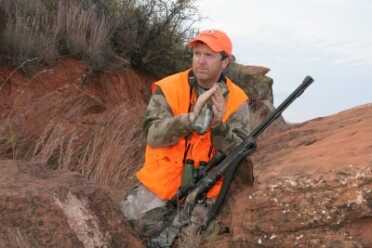
Compact rattling bags are easier to pack than antlers and can make realistic sounds with ample volume.
The Sound: Bucks lightly spar early in the season to begin establishing dominance and preparing for repelling challengers during the rut by mashing their antlers together and pushing back and forth. It can sound like limbs or rods of wood being knocked together, and like a schoolyard fight, can draw other potential battlers to the scene.
When to Use It: This is a great tactic just as the rut is about to peak and during the early season. Deer researcher Mick Hellickson once told me his studies had shown rattling to be extremely effective during the rut with a two- to three-fold increase in bucks responding then. “The downside is that most of the responses were from younger or middle-aged bucks,” Hellickson said. “The pre-rut and post-rut was better for pulling a more mature buck in.”
How to Use It: I’ve used it effectively hunting from a stand just doing a short sequence of smashing a rattling bag in my hands, alternating between loud and soft tickling sounds. One opening day of firearms season, I pulled in six different bucks—the last one a shooter. True practitioners, however, suggest you’ll enjoy better luck by keeping to the ground, setting up in a spot, rattling, waiting about 10 to 15 minutes and either rattling once again or moving on a couple hundred yards away and doing it again. Set up where you can see downwind or a downwind approach is made difficult by the terrain as a buck will certainly circle in from that direction.
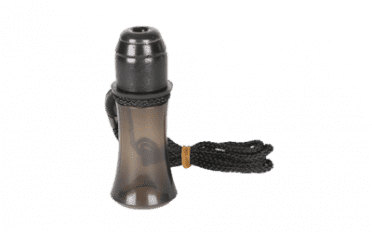
This snort-wheeze call by Flextone, called the Killer Wheeze, makes louder snort wheezes than most hunters can make with their mouths.
Snort-Wheeze
The Sound: An aggressive blowing sound made by bucks to challenge another when he enters his “space.” (Here’s a good video example of a buck making one, and one of hunting great Eddie Salter making a snort-wheeze.) A good example of a product for this is the Flextone Killer Wheeze.
When to Use It: Bone Collector star Michael Waddell says it “is the killingest call ever,” particularly in the peak of the rut when big bucks are at their most aggressive. Use it on a subordinate buck and it may run him off, however.
How to Use It: Pfffff-pfffff-pfffffffffft. I just make it with my mouth, forcing air through my top teeth pressed against my lower lip. There are a number of calls, most incorporated into a good grunt tube that will allow you to produce the call with volume.

i use only my vocal cords & it has never failed .(because it is a more natural ‘vibration ).